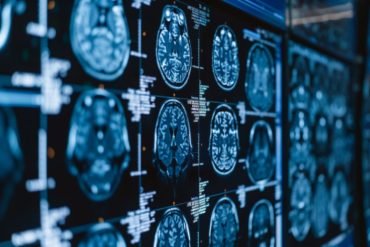Subarachnoid haemorrhage (SAH) is one of the most devastating cerebrovascular catastrophes causing death in 40 to 50% of the cases. The most common cause of SAH is a rupture of an intracranial aneurysm. If the aneurysm is found, it can be treated before the possible rupture. However, some intracranial aneurysms will never rupture – the problem is that the doctors don’t know which aneurysms will and which will not. So, they don’t know which patients should be treated and who can safely be left untreated.
A long-term, population-based Finnish study on SAH, which is based on the FINRISK health examination surveys, and published in PLOS ONE on 9th September, shows that the risk of SAH depends strongly on the combination of certain risk factors. The SAH incidence was shown to vary from 8 up to 171 per 100 000 person-years, depending on whether people had multiple risk factors for SAH – such as smoking, hypertension and female sex – or not.
Such an extreme risk factor -dependent variation in the incidence of any cardiovascular disease is exceptional, and may have significant clinical implications, says one of the main authors, Associate Professor Miikka Korja from the Helsinki University Central Hospital and Australian School of Advanced Medicine.

If smoking women with high systolic blood pressure values have 20 times higher rate of these brain bleeds than never-smoking men with low blood pressure values, it may very well be that these women diagnosed with unruptured intracranial aneurysms should be treated. On the other hand, never-smoking men with low blood pressure values and intracranial aneurysms may not need to be treated at all.
In this largest SAH risk factor study ever, the study group also identified three new risk factors for SAH: previous myocardial infarction, history of stroke in mother, and elevated cholesterol levels in men. The results revise the understanding of the epidemiology of SAH and indicate that the risk factors for SAH appear to be similar to those for other cardiovascular diseases.
We have previously shown that lifestyle risk factors affect significantly the life expectancy of SAH survivors, and now we have shown that the same risk factors also affect dramatically the risk of SAH itself. Thus, it appears quite clear that especially smoking cessation and hypertension treatment are important in preventing SAH and increasing life expectancy after SAH, clarifies one of the study group members, Academy Professor Jaakko Kaprio, from the University of Helsinki and National Institute for Health and Welfare, referring to their previous publication on cause-specific mortality on SAH survivors (Korja et al., Neurology, 2013).
The study group members have previously published also the largest twin study to date, confirming that heritability for SAH is very low (Korja et al., Stroke, 2010), and the first study on the incidence of SAH in type 1 diabetes, showing that the rate of non-aneurysmal SAHs in type 1 diabetes is unusually high (Korja et al., Diabetes Care, 2013).
Many of the previous studies on the epidemiology of SAH have relied on retrospective and single-center databases, which are unfortunately not very reliable data sources. Due to the unique health care system and common academic interest among doctors in Nordic countries, it has been possible to conduct high-quality and unbiased studies on SAH. We hope that our studies truly help doctors and patients, and are not only of interest in coffee tables on university campuses, says neurosurgeon Korja, and rushes to continue his working day in the operation room in Macquarie University Hospital, Sydney, which is one of his current appointments.
Notes about this neurology and epidemiology research
Contact: Dr. Miikka Korja – University of Helsinki
Source: University of Helsinki press release
Image Source: The middle cerebral artery bifurcation aneurysm image is credited to Miikka Korja and is adapted from the University of Helsinki press release.
Original Research: Full open access research for “Risk Factors and Their Combined Effects on the Incidence Rate of Subarachnoid Hemorrhage – A Population-Based Cohort Study” by Miikka Korja, Karri Silventoinen, Tiina Laatikainen, Pekka Jousilahti, Veikko Salomaa, Juha Hernesniemi and Jaakko Kaprio in PLOS ONE. Published online September 9 2013 doi:10.1371/journal.pone.0073760
Abstract for “Subarachnoid Hemorrhage in Type 1 Diabetes: A prospective cohort study of 4,083 patients with diabetes” by Miikka Korja, Lena M. Thorn, Stefanie Hägg, Jukka Putaala, Ron Liebkind, Valma Harjutsalo, Carol M. Forsblom, Daniel Gordin, Turgut Tatlisumak, Per-Henrik Groop, and the FinnDiane Study Group in Diabetes Care. Published online July 22 2013 doi:10.2337/dc13-0260
Abstract for “Genetic Epidemiology of Spontaneous Subarachnoid Hemorrhage: Nordic Twin Study” by Miikka Korja, Karri Silventoinen, Peter McCarron, Slobodan Zdravkovic, Axel Skytthe, Arto Haapanen, Ulf de Faire, Nancy L. Pedersen, Kaare Christensen, Markku Koskenvuo, Jaakko Kaprio, and the GenomEUtwin Project in Stroke. Published online September 16 2013 doi:10.1161/STROKEAHA.110.586420







